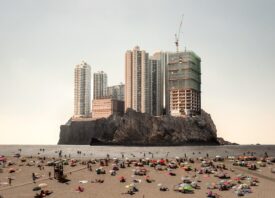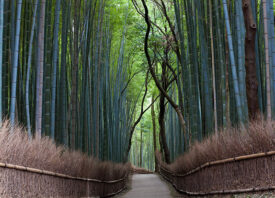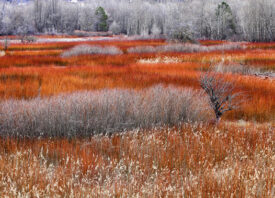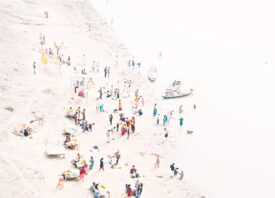Search this site
The Unexpected Architectural Beauty of Woodland Dens


“When I was a young child, my family lived in a house that had a huge, dead bamboo plant in the garden,” the photographer Marcus Peel remembers. “My brother and I decided to cut into the plant–becoming a walkway–through the very dense bamboo into the center of the plant to create a clearing.” It was their private den.
Peel’s interest in architecture flourished as he grew, but dens like the one he made as a child receded from view–until he started spotting them during his regular runs through the park, just outside central London. “They started to pop up in my peripheral vision among the trees,” he admits. “I had this immediate urge to explore them further, so I decided to return for a recce and carry out a search.
“I must have found at least 30 dens, and it was then that I knew I had found a new project. I’ve only ever seen families and children building these dens for the sheer fun of it; and being used by any passer-by, usually for picnicking or shelter from bad weather.”
As a lover of architecture, Peel was drawn to the similarities and differences between the dens. Most builders had formed a tipi-like, upside-down cone using branches, with a tree or stump serving as support. “It’s interesting to see how each builder responds to the found building materials,” he says. “Each design is unique, which I like to think reflects the builder—a form of personal expression.”
One of his recent favorites stands out for its cube shape. “It sits surrounded by the same type of tree used to build it,” Peel says. “The construction was very precise. It even had a floating platform inside.”
The location of the den will also influence its materials and construction. “The majority are very close to home in Richmond Park,” the artist says. “I’ve just added three more dens which are near Farnham in Surrey. I’m also interested in how the landscape changes depending on the location, revealing a bit about its identity from the flora.”
Peel cites Bernd Becher and Hilla Becher, the founders of the Düsseldorf School of Photography, among his inspirations. “Bernhard Becher described his subject matter as ‘nomadic architecture’ which I think could also be applied to these dens,” he admits. “They have a very short life before they are dismantled and returned to the wild.”
The dens won’t last forever, and that’s part of their appeal. Peel finds them either by chance while out and about or through word of mouth; after pinning the exact location on Google Maps, he’s on his way. There have been instances where he didn’t get there in time, and the den had disappeared. “There was one I found during my initial recce which lay over the whole of a fallen tree,” he remembers. “From afar, it looked like a ship.”
Also like the Bechers, Peel prefers to shoot on overcast days and soft, diffused light. “The black and white adds to the consistent aesthetic, avoiding any distraction by the changing colors during different seasons,” he continues. “Also, I believe the textures can be more clearly revealed without the added layer of color. I also keep to the same 6×4 horizontal format and the same height (six feet) which feels balanced and shows everything clearly. While I always start with my own set of rules and style of approach, I will ultimately follow my instinct.”
Though fleeting, these structures reveal hidden truths about the people, the land, and our relationships. For Peel, that makes them worth preserving, at least in photographs. “It’s been a lovely way to connect with people who are passing by while I’m photographing,” he tells us.” One local, who I met at the very start of the project, was a member of Friends of Richmond Park, who helps to break down the dens. However, he was kind enough to warn me about this and advised me to act quickly!”








Marcus Peel is a winner of Feature Shoot’s Reader Submission Spotlight. Every month, we invite photographers to submit their best bodies of work, with three chosen to be featured on our website and in both our regular and special edition newsletters, going out to an estimated 80,000 people overall, including gallerists, publishers, editors, agents, and more. You can submit your work for consideration here.
All images © Marcus Peel



